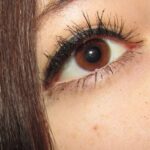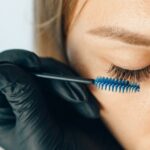Mascara typically expires after 3-6 months of opening. Signs of expired mascara include changes in texture, smell, or color, and eye irritation after application.

Understanding Mascara Expiration Dates
Mascara is an essential beauty product that enhances the appearance of the eyelashes, adding volume and length. Like all cosmetics, it has a limited shelf life. Mascara typically expires within 3 to 6 months of opening. The reason for this relatively short lifespan is its liquid consistency, which makes it more prone to bacterial growth. Cosmetic manufacturers often provide a guideline for the product’s shelf life with a symbol known as the Period After Opening (PAO) symbol. This symbol looks like an open jar with a number followed by an “M” (e.g., 3M or 6M). The number signifies the months the product is considered safe to use after opening.
PAO Symbol and Expiration
The PAO symbol serves as a helpful guide for determining when your mascara will expire. To keep track of your mascara’s expiration date, you can write the date you opened the product on the packaging. This practice will help ensure that you replace the product within the recommended time frame.
Table: Period After Opening (PAO) Symbols for Mascara
| Symbol | Meaning |
|---|---|
| 3M | Expires in 3 months |
| 6M | Expires in 6 months |
The Period After Opening (PAO) symbol indicates the number of months a mascara is safe to use after opening.
Signs Your Mascara Has Expired
To maintain the health and safety of your eyes, it is essential to recognize the signs that your mascara has expired. Using expired mascara can lead to eye infections and irritation. Here are some common indicators that your mascara has reached its expiration date:
Common Indicators of Expired Mascara
- Change in texture: Expired mascara may become clumpy, dry, or challenging to apply smoothly. The texture change may result in uneven application and a less-than-desirable appearance.
- Unusual odor: If your mascara develops a strange or foul smell, it’s a clear sign that it has expired. Fresh mascara typically has a mild, neutral odor, so any significant change in scent should be taken as a warning.
- Irritation or infection: If using the mascara causes redness, itching, swelling, or discomfort, it may have expired and should be discarded. Expired mascara may harbor harmful bacteria, which can lead to eye infections or other complications.
Table: Recognizing Expired Mascara
| Sign | Description |
|---|---|
| Change in texture | Mascara becomes clumpy, dry, or difficult to apply. |
| Unusual odor | Mascara develops a foul or off-putting smell. |
| Irritation | Mascara causes redness, itching, or discomfort. |
Common signs that your mascara has expired include changes in texture, unusual odor, and irritation.
“Using expired mascara can lead to eye infections and irritation, so it’s crucial to recognize the signs and replace the product as needed.”
How to Store Mascara for Maximum Shelf Life
Proper storage of your mascara is crucial for maintaining its quality and maximizing its shelf life. By following these simple storage tips, you can help prevent premature expiration and ensure that your mascara remains safe to use:
Mascara Storage Tips
- Keep it cool and dry: Store your mascara in a cool, dry place away from direct sunlight or heat sources. Excessive heat or humidity can cause the product to break down more quickly, reducing its shelf life.
- Tightly close the cap: Always make sure to close the mascara cap tightly after each use. This prevents air from entering the tube and drying out the product, which can cause clumping and shorten its shelf life.
- Avoid pumping the wand: When using the mascara, avoid pumping the wand in and out of the tube. This action introduces air into the product, causing it to dry out and increasing the risk of bacterial contamination.
Table: Mascara Storage Tips
| Tip | Description |
|---|---|
| Cool and dry | Store mascara in a cool, dry place. |
| Tightly close cap | Ensure the mascara cap is closed tightly. |
| Avoid pumping wand | Don’t pump the wand in and out of the mascara tube. |
Follow these storage tips to maximize your mascara’s shelf life and maintain its quality.
The Risks of Using Expired Mascara
Using expired mascara can pose several risks to your eye health and overall appearance. These risks include:
Risks Associated with Expired Mascara
- Eye infections: Bacteria can thrive in old mascara, and using expired mascara can introduce these bacteria to your eyes, leading to infections such as conjunctivitis or styes.
- Irritation and allergies: Expired mascara may cause irritation, redness, or even allergic reactions due to the breakdown of its ingredients over time.
- Poor appearance: As mascara ages, its performance declines, resulting in clumpy, uneven application that can detract from your overall look.
“The risks of using expired mascara include eye infections, irritation, and poor appearance. Replace your mascara regularly to maintain eye health and a polished look.”
Table: Risks of Using Expired Mascara
| Risk | Description |
|---|---|
| Eye infections | Expired mascara can introduce bacteria to your eyes. |
| Irritation | Old mascara may cause redness, itching, or discomfort. |
| Poor appearance | Aged mascara can result in clumpy, uneven application. |
Using expired mascara carries risks such as eye infections, irritation, and poor appearance.
Mascara and Product Bacteria Growth
Mascara can be a breeding ground for bacteria, which is why it’s important to be aware of the factors that can contribute to bacterial growth and take steps to minimize contamination.
Factors Contributing to Bacteria Growth in Mascara
- Age of the product: As mascara gets older, its preservatives lose their effectiveness, making the product more susceptible to bacterial contamination.
- Exposure to air: Every time you open the mascara tube and pull out the wand, you introduce air into the product. Oxygen can promote bacterial growth, especially when combined with the moist environment inside the mascara tube.
- Double-dipping: Repeatedly dipping the wand back into the tube after applying mascara can transfer bacteria from your eyelashes back into the product.
Table: Factors Contributing to Bacteria Growth in Mascara
| Factor | Description |
|---|---|
| Age | Older mascara has less effective preservatives. |
| Air exposure | Introducing air to the tube can promote bacterial growth. |
| Double-dipping | Transferring bacteria from lashes to the tube during application. |
The age of the product, air exposure, and double-dipping can all contribute to bacteria growth in mascara.
Tips for Minimizing Bacteria Growth
- Replace mascara regularly: As a general rule, replace your mascara every 3-6 months to ensure that it remains fresh and free of bacteria.
- Avoid sharing mascara: Sharing mascara with others can transfer bacteria between users, increasing the risk of infections.
- Clean your mascara wand: Periodically clean your mascara wand with a gentle makeup remover to remove any buildup and help minimize bacterial growth.
Table: Tips for Minimizing Bacteria Growth
| Tip | Description |
|---|---|
| Replace mascara regularly | Discard old mascara and buy a new one every 3-6 months. |
| Don’t share mascara | Sharing mascara can transfer bacteria between users. |
| Clean your mascara wand | Regularly clean the wand to remove buildup and bacteria. |
Follow these tips to minimize bacteria growth in your mascara and maintain good eye health.
How Packaging Affects Mascara Expiration
Mascara packaging plays a significant role in determining the product’s shelf life and expiration. Here’s how packaging can impact mascara’s longevity:
- Air-tightness: Mascara tubes that are well-sealed help to keep out air and contaminants, preserving the product’s freshness and preventing it from drying out.
- Preservatives: Mascara packaging should allow for the inclusion of preservatives that inhibit bacterial growth and extend the shelf life of the product.
- Ease of use: The design of the packaging, including the wand and applicator, can impact how well the mascara is applied and how often the tube is opened, which in turn affects the product’s longevity.
Table: How Packaging Affects Mascara Expiration
| Factor | Description |
|---|---|
| Air-tightness | Well-sealed tubes keep out air and contaminants. |
| Preservatives | Packaging should accommodate preservatives to extend shelf life. |
| Ease of use | Packaging design affects application and frequency of use. |
Packaging plays a crucial role in determining the shelf life and expiration of mascara.
Key Takeaways
- Mascara typically expires after 3-6 months of opening, but it’s essential to check the specific product’s expiration date.
- Signs of expired mascara include changes in texture, smell, or color, as well as eye irritation after application.
- To extend the shelf life of mascara, store it in a cool, dry place, and keep the tube tightly closed when not in use.
- Using expired mascara carries risks, including eye infections, irritation, and damage to your lashes.
- Bacteria can grow in mascara due to factors such as the age of the product, air exposure, and double-dipping. Replace mascara regularly and avoid sharing it to minimize bacterial growth.
- Mascara packaging affects the product’s expiration, as air-tightness, preservatives, and ease of use all play a role in determining its shelf life.
Conclusion
Mascara expiration is an important aspect of maintaining eye health and ensuring the best performance of the product. By paying attention to the expiration date, recognizing signs of expired mascara, storing it properly, and understanding how packaging affects its longevity, you can minimize the risks associated with using expired mascara and keep your eyes healthy.








